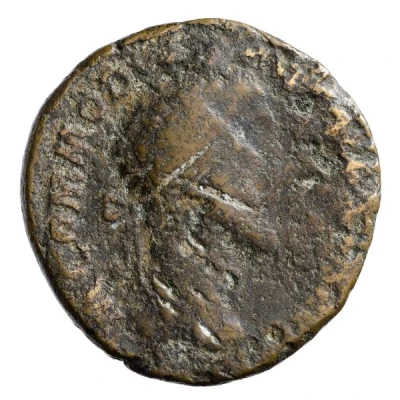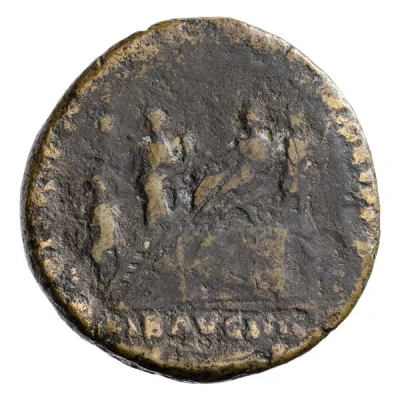


© Münzsammlung des Seminars für Alte Geschichte, Albert-Ludwigs-Universität Freiburg (CC BY-NC-SA 3.0 DE)
Sestertius - Commodus LIB AVG IIII TR P VI IMP IIII COS III P P S C; Liberalitas
181 year| Bronze | 28 g | 33 mm |
| Issuer | Rome › Roman Empire (27 BC - 395 AD) |
|---|---|
| Emperor | Commodus (Lucius Aurelius Commodus) (177-192) |
| Type | Standard circulation coin |
| Year | 181 |
| Value | 1 Sestertius = ¼ Denarius |
| Currency | Denarius, Reform of Augustus (27 BC – AD 215) |
| Composition | Bronze |
| Weight | 28 g |
| Diameter | 33 mm |
| Shape | Round (irregular) |
| Technique | Hammered |
| Demonetized | Yes |
| Updated | 2024-10-06 |
| Numista | N#265612 |
|---|---|
| Rarity index | 100% |
Reverse
Commodus, togate, seated left on curule chair on platform, attended by an officer; before him, Liberalitas, draped, standing left, holding tessera in right hand and corncuopiae in left hand; at left, citizen mounting right steps of platform.
Script: Latin
Lettering: LIB AVG IIII TR P VI IMP IIII COS III P P S C
Translation:
Liberalitas Augusti Quarta, Tribunicia Potestate Sexta, Imperator Quartum, Consul Tertium, Pater Patriae. Senatus Consultum.
The fourth liberality of the emperor (Augustus), holder of tribunician power for the sixth time, supreme commander (Imperator) for the fourth time, consul for the third time, father of the nation. Decree of the senate.
Comment
Example of this type:Münzsammlung des Seminars für Alte Geschichte, Albert-Ludwigs-Universität Freiburg
Source:
Online Coins of the Roman Empire (OCRE)
Interesting fact
One interesting fact about this coin is that it features an image of Commodus, who was a Roman emperor from 180 to 192 AD, on one side, and the goddess Liberalitas on the other. The image of Liberalitas is significant because it represents the idea of generosity and abundance, which was an important aspect of Roman culture and politics during that time. The coin's design and imagery reflect the values and ideals of the Roman Empire during the late 2nd century AD.

